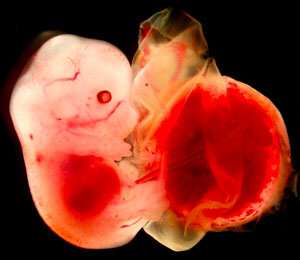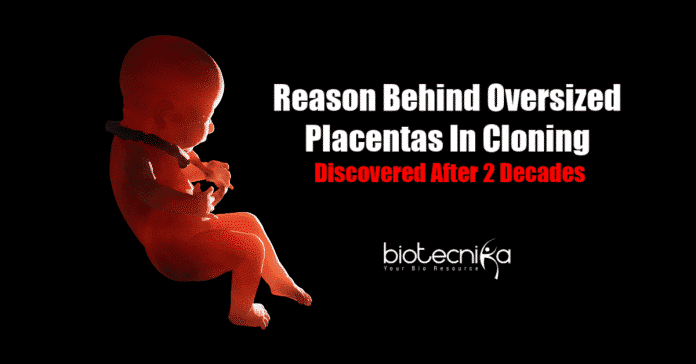Causes for oversized placentas in cloning discovered after 20 years
The reason by which the technique for cloning animals usually leads to extra-large placentas, and hence failed births, has actually been revealed in mice by an all-RIKEN team. The outcomes of the study will certainly assist in enhancing the success rate of cloning and can additionally clarify fertility treatments.
When Dolly the sheep became the initial mammal cloned from an adult cell, the somatic cell nuclear transfer (SCNT) – the cloning method made headings in 1997. The process of somatic cell nuclear transfer cloning method entails swapping of the nucleus of an egg cell from the mother with a nucleus from a normal somatic cell (from the nuclear donor animal) and then placing the egg in the surrogate mother’s uterus. Somatic cell nuclear transfer is a powerful method for a basic research study, medicine, environmental science, and agriculture.

But, somatic cell nuclear transfer’s birth rate is still well below that of natural fertilization, in spite of significant advancement
. Generally, the placentas of the artificially fertilized embryos are abnormally large, frequently resulting in developmental issues, which is one of the reasons why SCNT’s birth rate is below that of natural fertilization. However, the reason for this problem has actually remained an enigma, even after 20 years of research.The overexpression of the largest imprinted microRNA clusters in mice is one of the major reasons why SCNT frequently produces placentas that are too huge has been found by Kimiko Inoue, Atsuo Ogura, and their co-workers, the RIKEN BioResource Research Center. They were able to double the birth rate when they dealt with this.
By switching particular genes on and off as the embryo and placenta develop, a method known as genomic imprinting guides the early development of mammals. Based on small molecules attached to the genetic sequence called epigenetic marks, this can lead to the expression of genes from only one parent. The scientists discovered that the somatic cell nuclear transfer placentas’ lack of genomic imprinting based on the epigenetic mark histone methylation goes a long way to describing their uncommon proportion.
Kimiko Inoue said that DNA methylation is the primary epigenetic mark that regulates this expression system. But, trimethylation at lysine 27 of histone H3 controls imprinting specific to the placenta. This quelches the mother’s gene’s expression.
Discovering that the culprit was a microRNA that didn’t code for proteins was not at all expected, said Kimiko Inoue. She said that. Discovering that a non-protein-coding microRNA was the primary cause of the large placentas created by SCNT and not a protein-coding gene was actually amazing.
The research has repercussions beyond somatic cell nuclear transfer. Inoue said that an important role is played by the non-coding microRNA in the healthy development of placentas. According to her, this will certainly aid us in developing gene markers for assisted reproductive technologies and understand placental abnormalities.
Causes for oversized placentas in cloning discovered after 20 years
Author: Sruthi






























